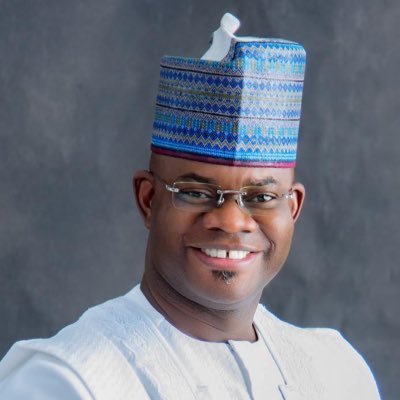Latest News
EFCC displays 51,933 pages, showing content of Naira Marley’s iPhone

The Economic and Financial Crimes Commission on Wednesday, displayed before a Federal High Court in Lagos, a virtual projection of a Compact Disc with 51,933 pages analysis of the iPhone of popular Nigerian singer, Azeez Fashola a.k.a Naira Marley.
The EFCC projected the virtual, through its second witness, Mr Augustine Anosike, a forensic analyst.
Anosike was still leading pieces of evidence in the trial of the defendant, who is facing 11 counts, bordering on conspiracy, possession of counterfeit credit cards as well as fraud.
The anti-graft agency preferred the charges on May 14, 2019, on Naira Marley, who sang the popular song: “Am I a Yahoo Boy”. He was consequently, arraigned on May 20, 2019, before Justice Nicholas Oweibo, but he pleaded not guilty.
The court had accordingly, granted him bail in the sum of two million naira, with two sureties in like sum.
The trial had since commenced in the case and the second prosecution witness who began his testimony shortly before the covid 19 lockdown in 2020, continued his evidence on Wednesday.
The News Agency of Nigeria reports that the witness who resumed his testimony on Tuesday concluded his evidence after the virtual display.
The Prosecution Counsel, Mr Rotimi Oyedepo, had told the court at the last adjourned date, that the prosecution only printed out hard copies of relevant portions of the exhibit, which it considered key to its case.
He had told the court that a full version of the total analysis was contained in a compact disc.
The printed copies of the exhibit is labelled ‘exhibit F’ while the CD containing full analysis is ‘exhibit F1’
The court had granted prosecution leave to display the CD in a projector, in order to discharge its burden of proof as required by law.
Also on the last adjourned date, the witness had narrated, how different text messages and chats containing credit card details, were exchanged between the defendant and another recipient identified as Yadd.
When the trial resumed on Wednesday, the witness, again reiterated portions of his earlier testimonies of October 26, and indicated the visual spots of those testimonies, on the screen of the projected CD.
For instance, the witness showed visual displays of the credit card numbers, chats, as well as incoming and outgoing short message services, which were analysed from the defendant’s iPhone.
The witness typically identified the “message trafficking” between the numbers +447426343432 and +447548061528.
On the whole, he told the court that the CD contained a total of 51,933 pages of the analysis conducted on the defendant device.
After the CD was displayed for about 45 minutes, the prosecutor then asked the witness to confirm if exhibits A and D, were vital elements of his analysis, and he replied in the affirmative.
Exhibit A is the Forensic Report Form, while exhibit D is the iPhone of the defendant.
Oyedepo then indicated to the court, that he had concluded the examination of the witness, adding that whatever remained was left for his address
The court noted the requested.
Fielding questions from Ojo, the witness confirmed to the court that he had confined his analysis within the compass of his forensic reports.
When the defence counsel asked the witness to confirm if his analysis had also covered the possible number of persons that had used the said iPhone of the defendant, the witness replied that the number of persons was not ascertained.
The defence asked, “As an experienced operative, are you aware that it is possible for a person other than the owner of a phone to have access to the use of that phone?”
The witness replied, “That will only be possible where the owner grants access.”
When the witness was asked who supplied him with the password to the iPhone, he told the court that the defendant provided the password to the investigating operatives who consequently, transmitted the same to him for his analysis.
He told the court that he only had knowledge of the period the iPhone was brought to him for forensics and not when it was taken from the defendant.
When asked to confirm the number on the iPhone the witness told the court that the registered number on the phone is iCloud +447426343432.
Meanwhile, when the defence counsel reminded the witness that he had told the court during the examination, that the telephone number of the defendant was 07426343732, the witness replied that any sim can be inserted into a device.
When asked to confirm if there is a difference between the owner and user of a device, the witness answered, “The names on a phone can be changed depending on what the owner chooses to use.”
The defence then asked the witness to show to the court from the two pages of his analysis summary, where he had indicated that there was a change of names in the device.
The witness replied that although it was not captured, the content of his report also reflects the content of the device as recovered therein.
Justice Oweibo adjourned the trial until November 30, December 13, and December 14.
According to the EFCC, the defendant committed the offence on different dates between November 26, 2018, and December 11, 2018, as well as May 10, 2019.
The commission alleged that Naira Marley and his accomplices conspired to use different Access Bank ATM cards to defraud their victims.
It alleged that the defendant used a bank credit card issued to another person, in a bid to obtain fraudulent financial gains.
The EFCC also said that the defendant possessed counterfeit credit cards belonging to different people, with intent to defraud which amounted to theft. The alleged offence contravenes the provisions of sections 1 23 (1) (b), 27 (1) and 33(9) of Cyber Crime (Prohibition) Prevention Act, 2015.
During cross-examination, defence counsel, Mr Olalekan Ojo (SAN), first sought leave of court to apply for a variation of its order and prayed that the court takes custody of the iPhone of the defendant who had been in the custody of the prosecution.
According to him, the Federal High Court is well capable of keeping the exhibits in its custody, adding that it would also create ease for the defence to apply for the exhibits if needed.
























